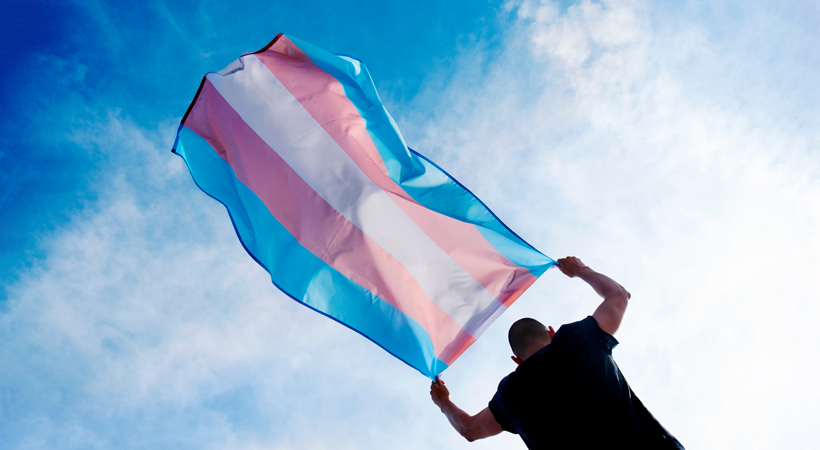Content warning: this article contains mention of homicide and suicide.
Transgender Day of Remembrance (TDoR) started as a local response by the trans community in San Francisco and has now grown into an international day of mourning.
What is Transgender Day of Remembrance (TDoR)?
Transgender Day of Remembrance started as a local response to the murder of Rita Hester in 1998 in San Francisco. At the time, Hester’s death was the most recent on a growing list of victims of transphobia.
Trans rights activist Gwendolyn Ann Smith and others started the event to commemorate Rita and many others in the San Francisco area. Smith writes:
“In 1999 a handful of transgender people sought to highlight the need for awareness around anti-transgender violence, which refers to attacks against people who are perceived as transgender — regardless of how one may personally identify.”
TDoR now internationally commemorates the lives lost to violent acts of transphobia and transmisogyny, as well as the silence that often follows these acts and the lack of justice for trans people who face violence and discrimination. Their statement of purpose reads:
“We remember those we’ve lost, celebrate our strength in the face of adversity, and commit to fighting transphobia to create a better, safer, and more inclusive world for everyone.”
When is Transgender Day of Remembrance?
Transgender Day of Remembrance is observed on November 20 each year.

What is the difference between Trans Awareness Week and Transgender Day of Remembrance?
Trans Awareness Week is the week leading up to Transgender Day of Remembrance. In 2023, Trans Awareness Week takes place between November 13-19. The days before the TDoR are when events are held to raise the visibility of trans and gender-diverse people alongside Trans Day of Visibility earlier in the year.
What are some of the events that take place on Transgender Day of Remembrance?
One of the main ways that the trans and gender-diverse community marks the day is with candlelight vigils. These are held around Australia on November 20, and you can find details on the TDoR Australia website. If you’re attending a vigil as an ally of trans and gender-diverse people, which we encourage you to do, please be respectful in your solidarity and follow the directions of the event organisers.
Why is Transgender Day of Remembrance important?
Transgender Day of Remembrance re-emphasises that trans people are valued within our community, and their death is a major loss that needs to be treated seriously.
The day is a great example of how our community collectively responds to injustice and ensures that trans and gender-diverse lives are honoured and respected. Despite this, we continue to lose trans and gender-diverse people to transphobia, with some reports indicating a new murder every 3rd day across the globe.
Trans communities are also disproportionately impacted by suicidality; 45 per cent of trans women, 53 per cent of trans men, and 40 per cent of non-binary people have attempted suicide in their lifetime, compared to 3 per cent reported by the general population.
Additionally, 82 per cent of trans women, 90 per cent of trans men, and 90 per cent of non-binary people in Australia have considered suicide as an option in their lifetime, compared to 13 per cent of the general population.
These statistics represent a collective response to the environment that many trans people find themselves in rather than anything inherent about the trans experience itself. We know that when trans and gender-diverse people feel safe and affirmed, these trends are far less likely.
Transgender Day of Remembrance represents a day of solidarity and a recognition of the lack of equity in these trends. It is an opportunity to remember victims, recognise trans and gender-diverse leaders and reflect on current and historical experiences of community.
What can allies do for Transgender Day of Remembrance?
TDoR offers allies a chance to reflect on how you show up for the trans and gender-diverse people in your life. Are you there when it counts, even if no one is watching?
Besides attending a candlelight vigil, here are some ways to get involved this TDoR.
- Check in with the trans and gender-diverse people in your life. Just texting to see if somebody wants to catch up for coffee can make a big difference.
- Donate your time and/or money to organisations working with and for the community.
- Share relevant resources, information and statistics on social media and anybody who may not know much about the experience of trans and gender-diverse people. This article and the organisations listed below are a good start.
- Follow, engage with, and share TDoR content from trans and gender-diverse creators and organisations.
Transgender Day of Remembrance is a time for reflection and community. On November 20, take a moment to recognise the struggles and resilience of such an important part of our LGBTQ community.
Trans and gender-diverse organisations and resources
If you’ve been affected by any of the issues raised in this article, contact QLife on 1800 184 527 or access their live webchat for LGBT peer support and referral. This service is for people wanting to talk about a range of issues such as sexuality, identity, bodies, feelings or relationships. QLife and partners operate during specific times — for out-of-hours support, contact Lifeline on 13 11 14.